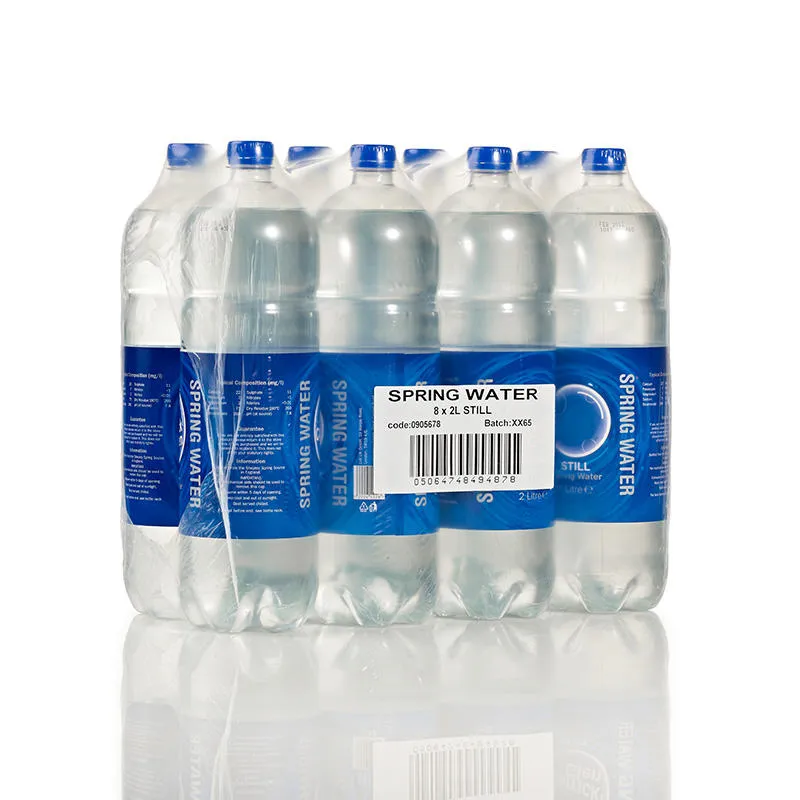As we know in the world of manufacturing and distribution, packaging matters just as much as your product in this fast-paced economy. Shrink wrap has become one of the most favoured choices for packaging bottled goods, anywhere globally. The reason it is so popular is because it is versatile, offers protection and costs next to nothing.
What is Shrink Wrap?
Shrink wrap is a plastic film, or similar product, made from polymer plastic that will shrink and tighten when heat is applied. Shrink Wrap material are typically made with polyolefin (POF), polyethylene (PE) or polyvinyl chloride (PVC) that plastic shrinks tightly over whatever it is covering by shrinking uniformly.
For bottle applications; shrink wrap gives more benefits than just tamper-evidence and structure as also looks better due to ability for branding and labeling impressions.
Why Use Shrink Wrap for Bottles?
- Tamper-Evident Seal
The greatest benefit of shrink wrapping bottles is it offers a tamper-evident seal. No matter if it is a cap seal or full body shrink sleeve, as soon as the product is opened that attempt will be noticeable. These features are extremely important for food, beverages, pharmaceuticals and particularly health-related products where consumer confidence is key.
2. Enhanced Shelf Appeal
The outer layer of a tube can be branded with high-resolution print and bright colours including shrink wrap. This turns a regular bottle into a visually appealing product that jumps off the shelves. Shrink sleeves span the entire body of the bottle, which creates a 360° wrap-around print area ideal for brand messaging, logos and regulatory information.
3. Durability and Protection
Bottled goods are packaged with shrink wrap so as to protect them from dust, moisture and external contaminants. It is a protective layer against tamper, scratch and liquid penetration that protect products in the transportation or storage process. This is a big plus, especially in sectors such as food and beverages, where cleanliness and product safety are key concerns.
4. Bundling and Multi-Packaging
Shrink wrap is used most often as a group of multiple bottles for sale at the retail level. Not only does this make logistics and handling easier, but it also enables a cheap way to gift pack promotional multi-packs as well (for example, 3-for-2 bottle deal). The most room-consuming cardboard boxes will no longer be produced, and therefore we contribute to the reduction of package waste.
5. Lightweight and Cost-Effective
It is also lightweight —which lowers shipping costs in relation to rigid packaging materials. And other big advantage: It is relatively inexpensive (both to produce as well as apply) compared to in higher volume manufacturing environments. By leveraging these technologies with minimal material usage and efficient automation, businesses can lower costs associated with packaging without sacrificing the safety of the products.
Types of Shrink Wrap for Bottles
While other common types of shrink wrapping on a bottle include:
a) Shrink Sleeves
These are typically printed sleeves which either fully or partially covers the bottle. The sleeve adjusts to fit the bottle with heat. Full Body Sleeves: Great for branding: This is used extensively in the beverage industry.
b) Cap Seals (Neck Bands)
Tricia elbow_PCZ — subunit shrink films are small shrink wraps usually placed on a cap or the neck of a bottle. Mainly used for tamper-evident seals, the labels are transparent or color-coded.
c) Shrink Bundling Film
Promotional packThis type of shrink wrap is a bundle of several bottles. Generally, it simply the stronger polyethylene film, which is used for wrapping bottles together in water bottle multipacks or soft drink cartons.
Industries That Rely on Bottle Shrink Wrapping
One of the most common applications to shrink wrap bottles has been used in several key industries:
- Drinks–bottled water, soft drinks, juices, beer or wine.
- Hair pet grooming: Shampoo, conditioner, body wash as well as ointments
- Pharmaceutical—Liquid syrups, health tonic
- Consumer & Industrial Chemicals: Cleaners, Washing and Car fluids.
Shrink Wrapping Process for Bottles
Three Basic Steps of the Shrink Wrapping Process
- Applying Shrink Film/ Sleeve: It is slipped over the bottle/ product.
2. Shrink the Film: Heat tunnel or gun shrinks film around bottle.
3. Cooling and finishingAfter sealing, the bottle cools as a wrap sets and provides a secure, professional finish.
Fully automatic shrink sleeve applicators and heat tunnels can also be installed on modern bottling lines to work at high speeds keeping your production plant efficient.
Sustainability and Environmental Considerations
As further understanding of the problem of plastic waste continues, more companies are looking for alternative, sustainable shrink wrap options. For example, there is now the possibility of choosing recyclable polyolefin shrink film or bio-based plastics. Plus, because shrink wrap requires typically less material than rigid packaging it is more environmentally friendly provided it is properly disposed of and recycled.
Final Thoughts
Shrink wrap for bottles offers a multitude of benefits—from product protection and tamper-evidence to cost savings and aesthetic enhancement. Its flexibility across different industries and packaging requirements makes it an ideal solution for manufacturers looking to balance functionality, safety, and brand identity.
With the continued advancement of technology and a growing need to be sustainable, so will that of shrink wrap, which will result in the continuing trend for more eco-friendly materials being used and further reducing energy consumption during its production. Shrink wrapping still holds its place for businesses striving to step up the appearance and security of bottled goods.





